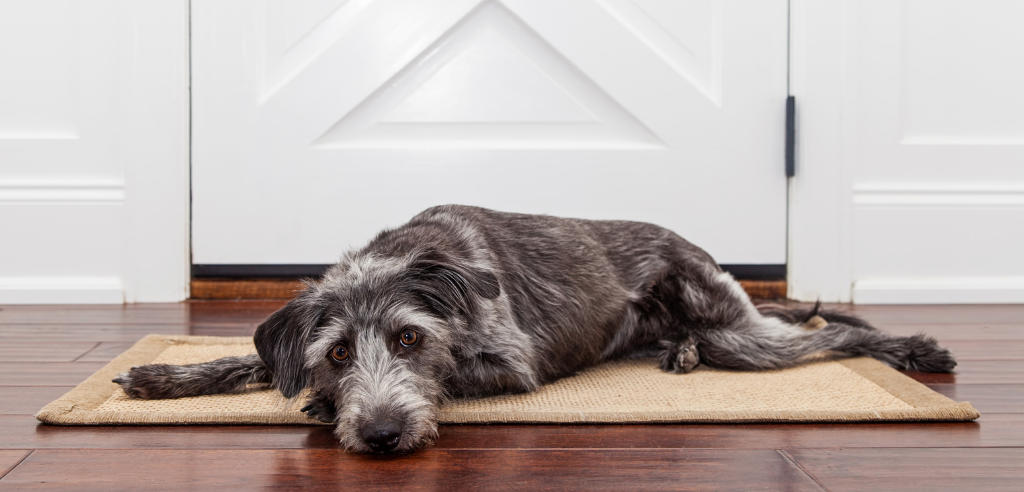During lockdown, our furry friends have gotten used to us being home with them 24/7 but now we’re all starting to return to the office, how can we ensure our dogs are happy being left behind and not suffering from separation anxiety?
Research shows that as many as 8 out of 10 dogs can suffer from separation anxiety but how do you know if their excitement when you return home is normal or a result of anxiety?
To help you better understand separation anxiety, we’re sharing the signs you need to look out for in your dog as well as ways you can help make the transition of heading back to the office as stress free as possible for them.

What is separation anxiety?
Separation anxiety is a behavioural term for when dogs become stressed when they’re left home alone.
Dogs are pack animals and even though they’re now domesticated that mentality is still there. This means they’re often more comfortable when their family, or their pack, is together at home. So when their pack is apart they’re more likely to become stressed.
Different breeds of dogs can be more likely to suffer from separation anxiety and it tends to show up more often in dogs adopted from shelters.
What are the signs of separation anxiety to look out for in your dog?
The signs of separation anxiety can vary from dog to dog. Some become agitated as their owners prepare to leave the house, others may seem anxious or depressed and many will try to stop their owner from leaving the house all together.
Some common signs to look out for are:
- Excessive barking and whining as you prepare to leave and once your dog is alone
- Destructive behaviour such as scratching at the door and chewing the furniture
- Going to the toilet inside the home
- Pacing
- Extreme escape attempts.
Some of these behaviours can go unnoticed as they only happen when you’re not there. It may be worth taking the time to film your dog when they’re home alone so you can discover any potential issues that need resolving.

How to help your dog cope with separation anxiety
When treating a dog with separation anxiety, the aim is to teach them to enjoy, or at least tolerate, being left alone for periods of time. Here are some top tips to help make that transition to spending more time alone easier for your pup:
- Start building up their time alone from a few minutes to a few hours. This way they can slowly get used to being alone rather than having to deal with a sudden change.
- Take your dog for a walk before you leave so they have a chance to go to the toilet and burn off some energy and then feed them a small meal when you return. This should encourage them to relax whilst they’re alone.
- Make leaving and returning as uneventful as possible by not making a big fuss of saying goodbye to your dog and only greeting them once they’ve calmed down.
- Leave your dog a special toy to enjoy whilst your away, like a stuffed Kong. Make sure they only get this special toy when you’re not there so that they learn that being left alone means getting a special treat.
- Turn on the TV or radio to muffle outside noises that might cause them to bark and whine
- Consider hiring a dog walker or asking a neighbour to stop by to give your dog a midday break and a chance to go to the toilet outside and stretch their legs.
- If your dog has been mischievous whilst you’ve been gone, it’s important not to react to negatively. This may cause them to get anxiety about how you’ll act the next time you return and make their behaviour even worse.
If your dog is suffering with extreme separation anxiety, it’s important to seek professional help by talking to your vet who can help develop a treatment plan for you and your dog.

We hope you’ve found this advice helpful – if you have any tips that you’d like to share with our Pawfit community, let us know on our social media or by emailing media@pawfit.com.



